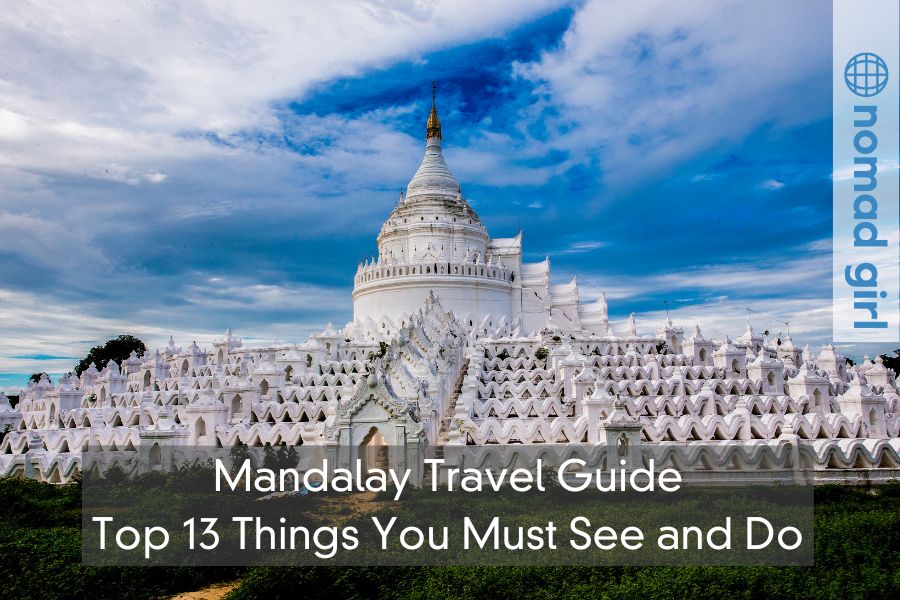Exquisite and exotic, Mandalay evokes nostalgia for the olden days, the same kind that Rudyard Kipling poignantly expressed in his famous poem. After all, Mandalay was the last royal capital of Myanmar before the British occupation.
The city lies at the foot of Mandalay Hill. It teems with old-world charm, peppered with pagodas, temples, monasteries, and colonial buildings. Amidst this rustic ambience, it is a thriving urban hub, home to markets, restaurants, and a budding teahouse culture.
While Mandalay is a great destination, it is under the radar for most tourists visiting Southeast Asia, even when tourist come to Myanmar they prefer to go to Bagan. If you’re a digital nomad looking to escape the noisier and busier cities of its neighboring countries, Vietnam and Thailand, Mandalay is a breath of fresh air.
Regarded as the cultural center of Myanmar, Mandalay offers a lot of exciting activities, attractions, and adventures. Here is our Mandalay travel guide to help you plan a memorable trip to this magical city.
1. Wander Around Mandalay Palace
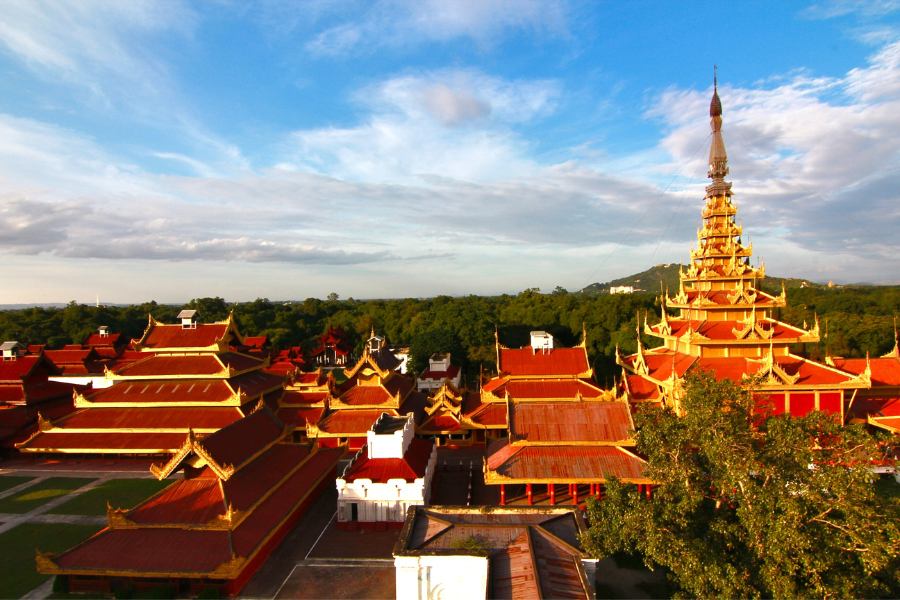
Built in the 1850s, the Mandalay Palace was home to the last royal family of Myanmar before the British took over the country. A fire razed the palace during WWII, but it was restored in the 1990s. A high wall and a moat, 64-metre-wide, 4.5-m deep, surround the present-day complex.
On the palace grounds are 40 buildings, including a wooden watchtower with striking city views. There’s also a clock tower, an audience hall, a Supreme Court, the royal mausoleums, and the Glass Palace, the king’s main living area. One of the top attractions in the compound is the ornate lion throne, the only one that remained of the eight thrones used by the Burmese monarchs.
On the westernmost part of the complex is a mini museum with a small collection, including a gorgeous four-poster bed that belonged to King Thibaw.
2. Stroll Across the U Bein Bridge

Spanning 1.2 kilometers, the U Bein Bridge connects Mandalay to the district of Amarapura, the country’s former capital. It is the world’s longest teakwood bridge and consists of 1100 wooden posts, some of which have been replaced with concrete in recent years.
The bridge is a little wobbly, with holes in some parts. Still, it is a popular spot for tourists and locals, mainly because of its mesmerizing sunset and sunrise views. It is also an excellent place for people-watching. At sunrise, you’ll witness fisherfolks heading out to the lake on their boats and locals exercising.
3. Soak Up the Beauty of Mandalay Hill

This famous hill towers 760 feet over Mandalay and is the ideal spot to see the sprawling expanse of the city. But not only that. Climbing up the 1729 steps cut into its southern slopes is the perfect workout. Along the route, you’ll pass pagodas, temples, and bizarre statues, such as that of the ogress San Dha Mukhi presenting her cut-off breasts.
It takes roughly 30 to 40 minutes to reach the summit, but it’s all worth the effort. The hill is busiest at sunset as locals arrive to exercise and tourists to bask in the views. If you don’t like hiking, you can take a tuk-tuk to the peak for around 7,000 kyats round trip. There is also a lift, but it’s mainly for people with disability and closes before sunset.
Mandalay Hill is a religious site, so visitors have to cover their shoulders and knees. Certain holy places also require everyone to remove their footwear upon entrance.
4. Witness the Buddha’s Morning Bath at Mahamuni Paya
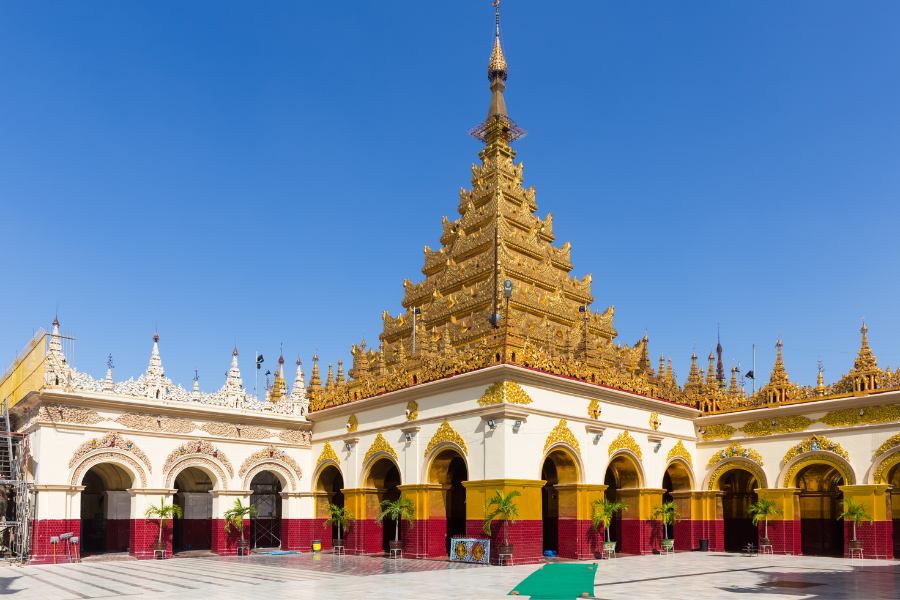
Home to a 13-foot-tall, seated Buddha believed to be 2,000 years old, Mahamuni Paya is a renowned pilgrimage site visited by thousands of locals every day. To honor the Buddha, male devotees apply a gold leaf to the statue. Reportedly, the Buddha is six inches thick in some places and weighs almost 12 tons because of all the golden sheets covering it.
Unfortunately, only men can stick gold leaves. However, if you visit at 4:00 am, you can watch the resident monks wash the face of the Buddha and brush his teeth with sandalwood paste. They then pass the leftover water from the bath to the waiting devotees, who sprinkle it over their heads and tongues.
5. Discover the World’s Largest Book in Kuthodaw Pagoda

The stunning Kuthodaw Pagoda is a compound of 729 stupas containing giant marble slabs inscribed on both sides with the teachings of Buddha. At the center is the main stupa, 57 meters high with gold-gilded terraces, which houses a tablet that tells the creation of the pagoda. Together these 730 structures make up the world’s largest book.
A short distance from Kuthodaw is Sandumi Paya, another golden shrine surrounded by 1,774 white stupas with stone tablets inside. This pagoda is home to the country’s largest iron Buddha image and the burial site of crown prince Kanaung and his sons, murdered in 1866 by rival heirs to the monarchy. The entrance fee includes admission to both locations.
6. Admire the Decos of Shwenandaw Kyaung
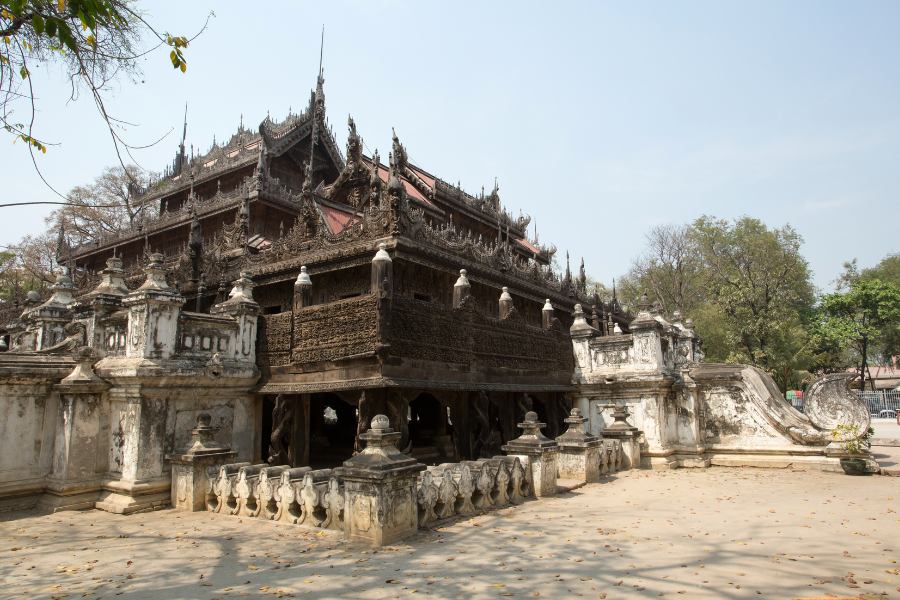
Less than five minutes from Kuthodaw is the elegant Shwenandaw Kyaung, a monastery slash temple known for its intricate wood carvings of Buddhist myths. What makes this 19th-century building unique is it is made entirely of teak wood gilded with gold and decorated heavily with elaborate engravings and precious gemstones on its walls and roofs.
Shwenandaw was originally part of the Amarapur royal palace. In 1878, it was dismantled and moved to its current location upon the order of King Thibaw, who believed the ghost of his father, King Mindon, haunted it.
7. Explore Yankin Hill
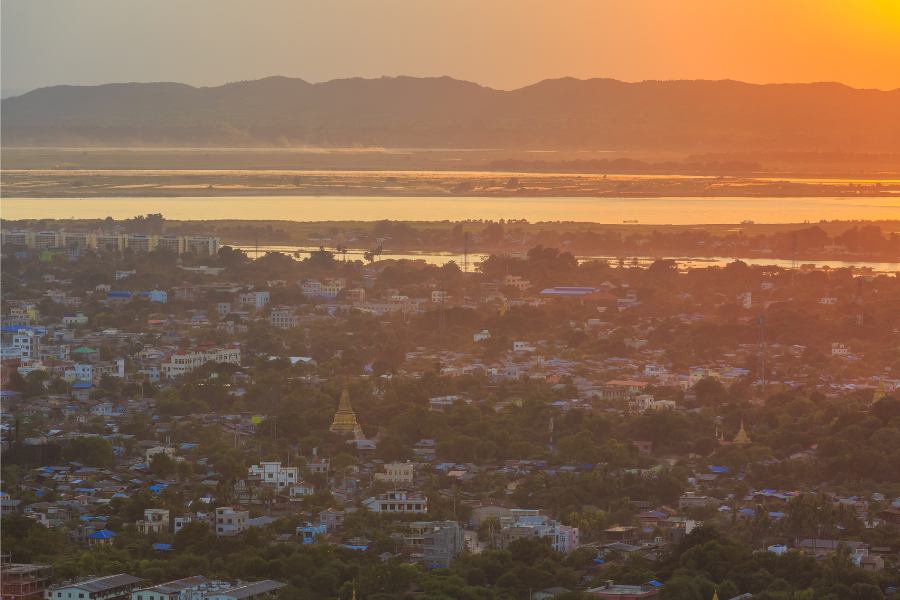
Yankin Hill offers sweeping panoramas of Mandalay’s famous rice paddies that stretch far into the Shan foothills. The climb takes about 10 minutes along a covered stairway that winds around the tree-covered and temple-studded slopes of the hill. At the top is a spacious viewpoint and a statue of a sitting Buddha.
You may encounter some domesticated deer as you hike to the summit. Buddhists believe that feeding them brings good karma. Crisscrossing through pagodas and temples is a pathway that leads to golden fish statues thought to bring rainfall during a drought.
If you have time left, visit Mya Kyauk monastery, located at the foot of Yankin Hill. Also called the Emerald Stone Pagoda, the monastery is known for its natural spring water believed to cure diabetes and gout.
8. Revisit the Past at Mingun Pahtodawgyi
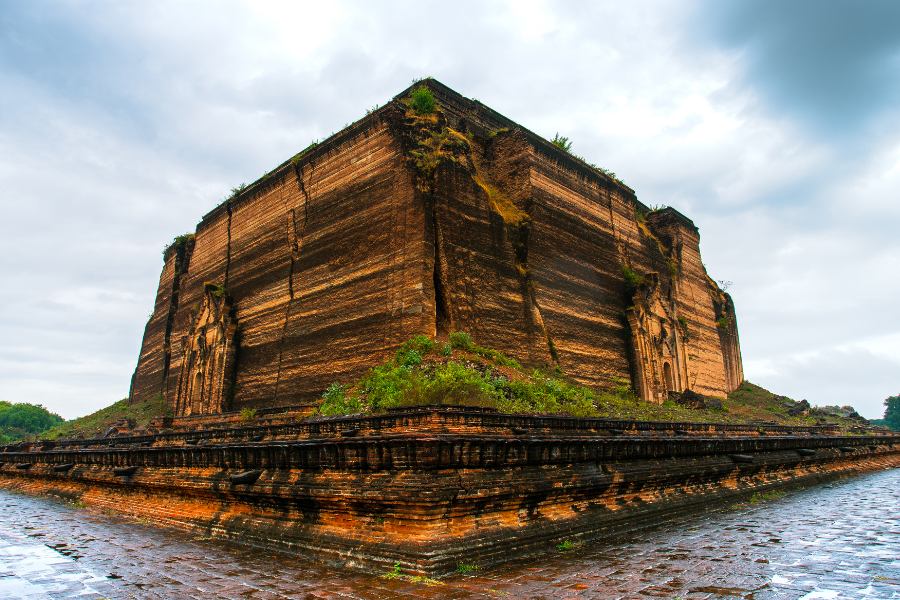
About an hour northwest of Mandalay is the sleepy town of Mingun, where you’ll find the ruins of an incomplete stupa. Construction of the building started in 1790 by King Bodawpaya, but it was intentionally left unfinished. The project was too ambitious and costly that the king’s advisers made up a prophecy that the king would die once the stupa was complete.
On the site stands an impressive 50-metre-high building, which is only one-third of the pagoda’s intended 150-metre height. In 1839, an earthquake left cracks in the monument. Still, Pahtodawgyi remains one of the most visited stupas in the country and holds the record as the world’s largest pile of bricks.
9. Take a Photo of the Iconic Hsinbyume Pagoda
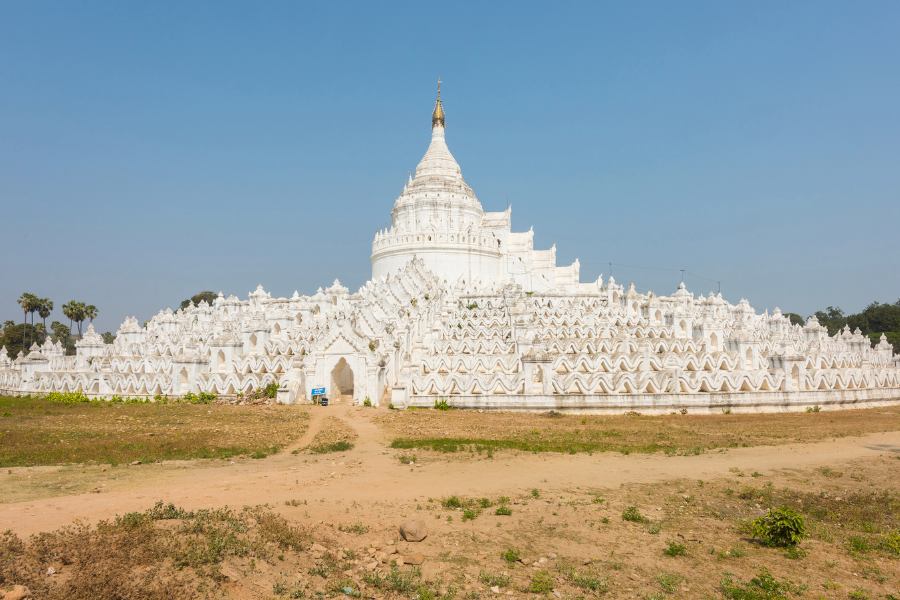
A short walk from Pahtodawgyi, the Hsinbyume Pagoda is Myanmar’s answer to India’s Taj Mahal, but more lowkey and less crowded. King Bagyidaw built it in 1816 in memory of his first wife and cousin, Princess Hsinbyune (White Elephant), who died during childbirth. Hsinbyume Pagoda is one of the most instagrammable sites in the country; it would be a sin not to take a photo.
Painted all white and shaped like rolling waves, Hsinbyume is modelled after the descriptions of Mount Meru, the mythological center of the Buddhist cosmos. Seven circular terraces symbolizing the seven mountain ranges around Mount Meru lead up to a massive stupa which signifies the sacred mountain itself. There are small statues of mythical creatures such as ogres, Naga serpents, and various spirits on every level of the pagoda.
10. Chase Waterfalls
Mandalay’s heat can get oppressive in the daytime, especially during summer. Luckily, you can head to the city outskirts, where you’ll find spectacular waterfalls and enjoy a pleasant dip.
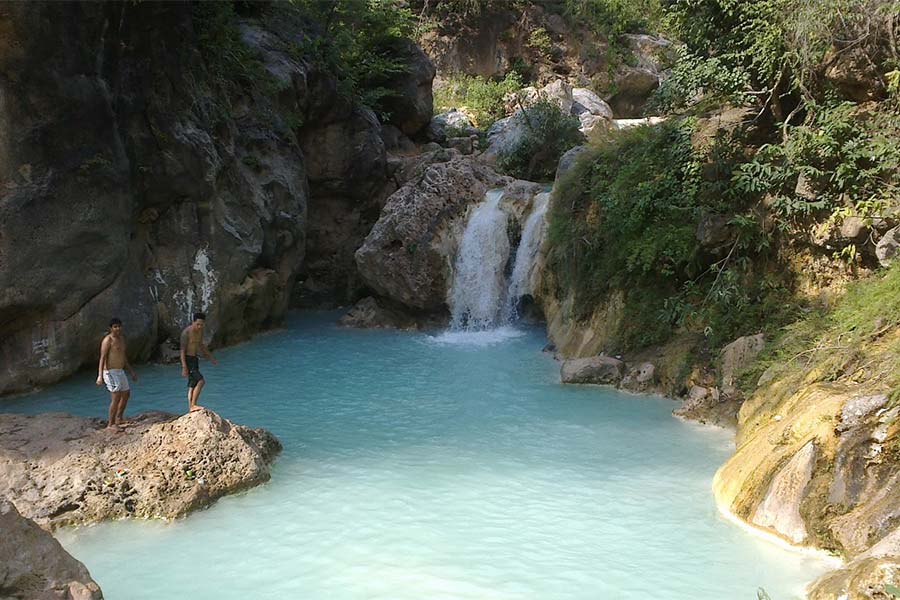
Dee Doke Waterfalls, tucked between lush mountains about an hour and 15 minutes away from Mandalay, is one of the most famous falls in the area. It will take roughly 20 minutes to get to the cascade from the main entrance. Though it is a popular picnic spot, it remains uncrowded and secluded. Nearby is a hidden lagoon known for its mineral-rich aqua-blue waters.
To see more of the region, consider renting a scooter. You can drive northeast of Mandalay to the hill town of Pyin Oo Lwin. In the jungle at the foothills lies the 400-foot Anisakan Falls, also known as Dat Taw Gyaint, famous for its brilliant blue waters and a small golden pagoda at its base.
11. Enjoy the Local Cuisine
Burmese cuisine may not be as famous as Thai or Vietnamese, but it is a delightful and unique gastronomic experience. The local dishes feature rice, noodles, seafood, different meats and vegetables seasoned with dried spices and fresh herbs. Tropical fruits are also essential ingredients.
Food in Mandalay is a blend of local, Chinese and Indian influences. Be sure to try Mont Di (noodle salad), Bow See (steamed bun with meat or vegetable filling), Htoe Mote (glutinous rice cake dessert with cashew nuts, buttercream and raisins), and Lahpet (pickled tea salad.)
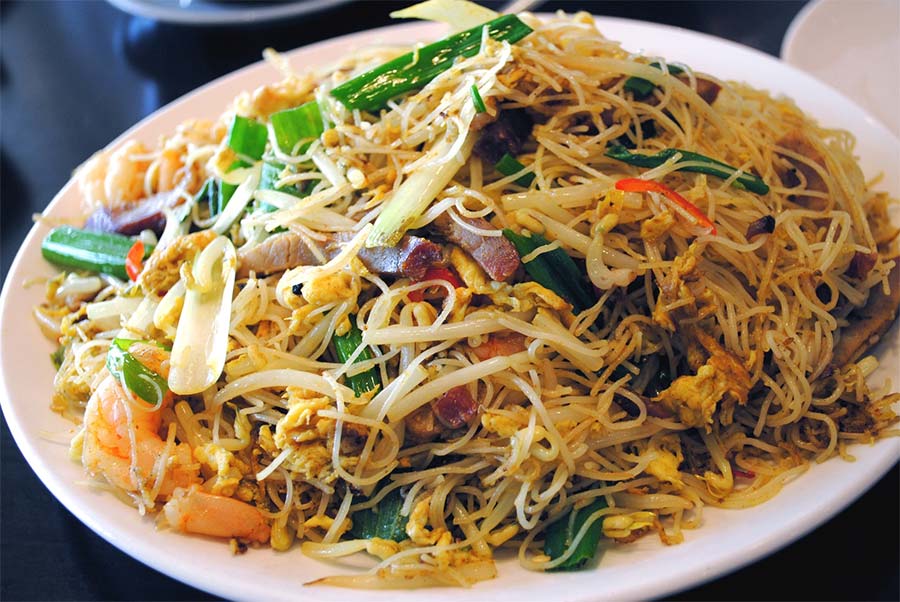
Mont Di – Noodle Salad
The street food is mouthwatering. There are bread stalls selling roti with a spicy dip and outdoor restaurants serving steaming bowls of soup. Pork skewers marinated in light soy sauce are a staple in the city. Finish your hearty meal with a drink or two on a rooftop beer garden.
12. Hunt for Souvenirs in the Markets
While Mandalay does not have massive malls or fancy boutiques, it has some fascinating old-school markets. The 12-acre Zegyo Market is the city’s oldest and most important shopping center. It is home to hundreds of stores selling handicrafts, souvenirs, jewelry, textiles, electronics and local delicacies.
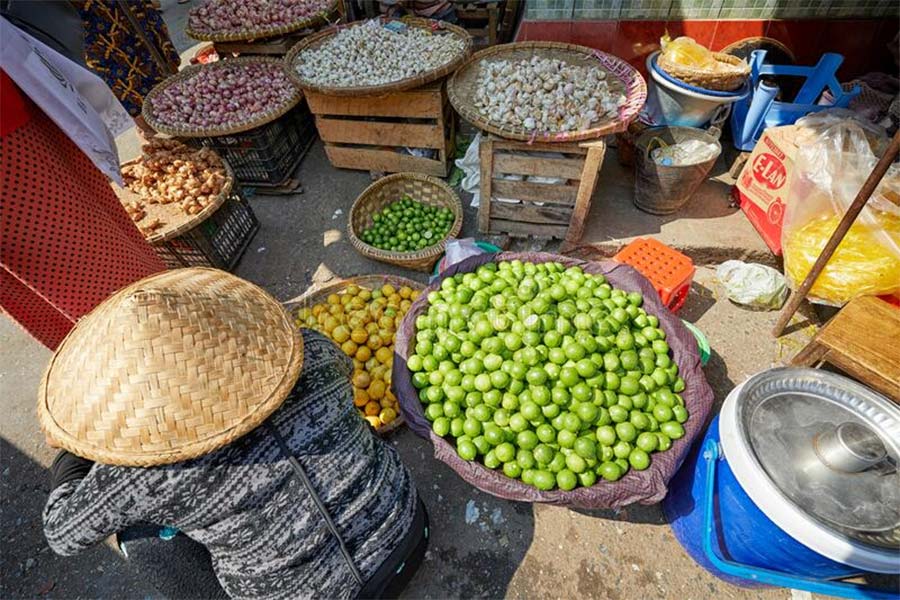
For a unique shopping experience, head to the Jade Market, one of the oldest trading sites in the country. Apart from jade, the market sells other precious stones, Buddha statues, and hand-made jewelry. Even if you don’t plan to buy anything, you will still enjoy watching local artisans working on their craft.
13. Make a Beeline for Inwa (Inn Wa)
An ancient city 20 kilometers from Mandalay, Inwa was the royal capital of Myanmar for five centuries. The monarchy abandoned Inwa in 1839 after an earthquake destroyed it. Today, it’s a famous day-trip destination for tourists who want to explore its ruins. The top attraction in Inwa is the 430-year-old Bagaya Monastery. Made of teakwood, it stands 57 meters high, decorated with intricate carvings of flowers, birds and animals.

Another popular site is the Maha Aungmye Bonzan Monastery, a massive brick building built in 1818. But if you want to delve deep into Inwa’s history, visit the Yadana Hsemee Pagoda Complex, which dates back to the 1400s. Here, you can explore 17th-century stupas, a row of columns surrounding a seated Buddha, and a colossal rectangular structure with a caved-in roof.
Myanmar Highlights
Myanmar has plenty of other exciting destinations to visit.
DIY Travel Guide to Bagan, Myanmar – Asia’s Largest Temple Complex


